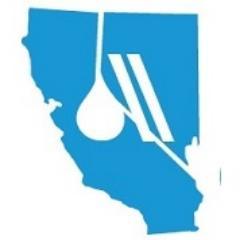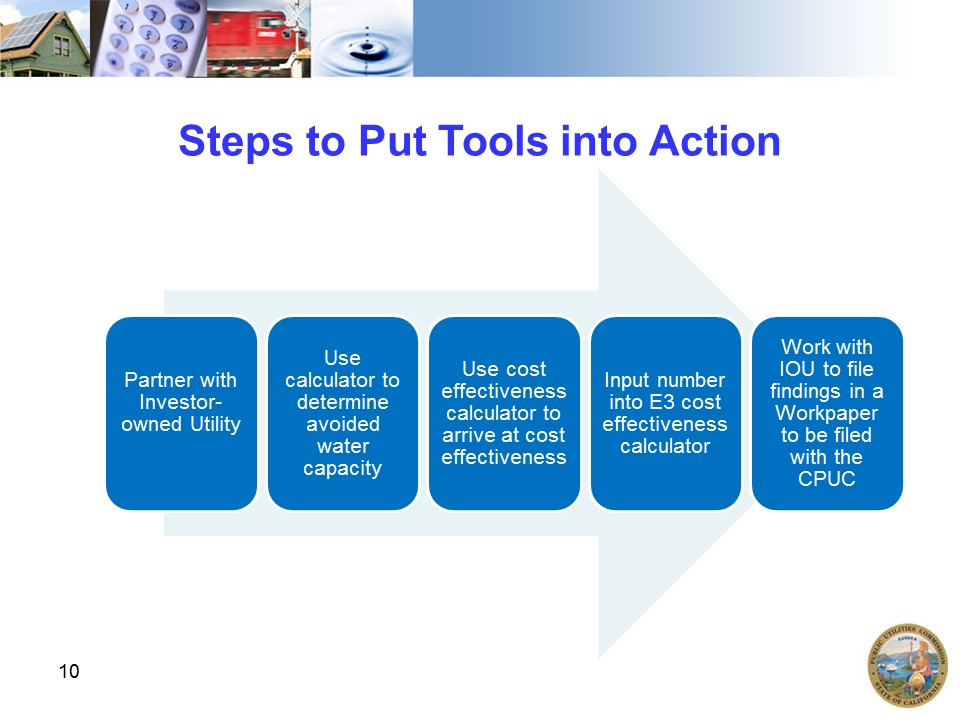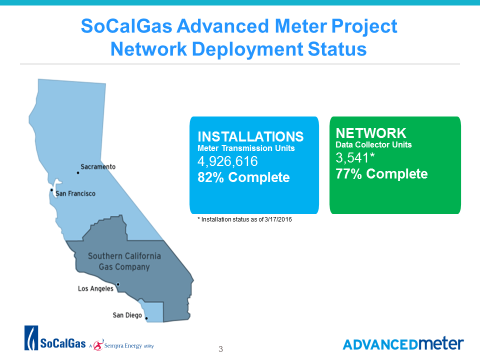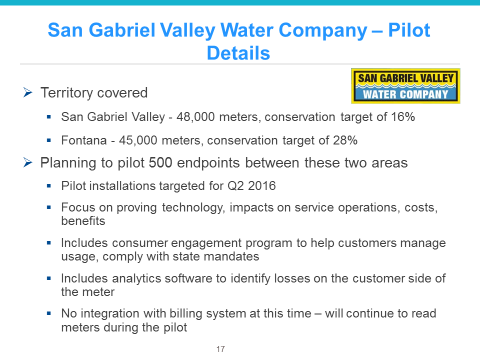On March 22, California Water Association (CWA) Executive Director Jack Hawks moderated a water-energy nexus panel at the American Water Works Association California-Nevada Section conference in Sacramento. Panel members included Rory Cox, Energy Analyst, California Public Utilities Commission (CPUC); Mangesh Basarkar, Principal Product Manager, Emerging Technologies, Pacific Gas & Electric (PG&E); Richard Harris, Manager of Water Conservation, East Bay Municipal Utilities District (EBMUD); David Mercer, AMI Technology Project Manager, SoCal Gas; Monique Delmar, Shared Network Pilots Project Manager, SoCal Gas; Dave LaJeunesse, Sales Director, Aclara; and Christine Boyle, Ph.D., Founder and CEO, Valor Water Analytics.
The panel focused on the CPUC’s comprehensive water-energy rulemaking, the first phase of which culminated in a sophisticated method of quantifying the benefits of water utilities’ water-saving programs. Two tools resulting from the rulemaking – an avoided water capacity cost calculator and a water-energy cost calculator – allow water agencies and energy utilities to factor both hot- and cold-water savings into the CPUC’s energy-efficiency programs.
The first objective of the panel was to acquaint water agencies with the ability to assess the cost-effectiveness of their water-saving programs. The second objective focused on phase two of the CPUC’s rulemaking, which includes three tracks that will:
- Make adjustments to the water-energy calculator based on real-life experience;
- Initiate pilot programs with commercial, industrial and agricultural customers to take advantage of “energy matinee pricing,” which promotes the use of renewable energy and low-water use power generation when it is most available on the electric transmission grid; and
- Direct energy utilities to develop pilot programs enabling water agencies in their service territories to partner with/piggyback onto the electric or gas companies’ existing advanced metering infrastructure (AMI) infrastructure.
Rory Cox outlined several key components of the CPUC’s water-energy nexus decision in his presentation titled, Quantifying Water-Energy Savings. Cox discussed how the water sector can save energy and reduce greenhouse gas emissions through various energy-efficiency programs and partnerships. He concluded with an in-depth analysis of phase two of the water-energy rulemaking, including advanced meter utilization, matinee pricing tariffs, improvements to the water-energy calculator and the possibility of adding telecom to the water-energy nexus.
Since the State Water Resources Control Board’s emergency drought regulations have resulted in a huge increase in customer awareness of water usage, customers are clamoring to know their real-time water usage to avoid paying penalties or surcharges. It is no longer feasible for customers to wait 30 to 60 billing-cycle days to find out how much water they’ve used; therefore, the CPUC and water industry are looking at ways to solve this problem. AMI could be part of the solution.
SoCalGas’s presentation highlighted its water-energy nexus AMI pilot program. The company is upgrading existing natural gas meters to advanced meters that will automatically read and transmit hourly gas usage information on a next-day basis. SoCalGas’s shared network service also will transmit meter and sensor data for other utilities, including San Gabriel Valley Water Company (SGVWC), within its service area. The pilot project will include 500 endpoints for SGVWC in San Gabriel Valley and Fontana.
Key partners on the pilot include Aclara, which will provide meter transmission units, integration services and technical support to the water utility, and Valor Water Analytics providing analytics services.
The panel concluded with PG&E’s and EBMUD’s presentation, which highlighted the companies’ AMI-based water-energy residential behavioral study pilot project, a collaboration with the University of California, Davis. The pilot includes treatment and control groups of up to 5,000 residential meters each that will be connected to EBMUD’s AMI network. The treatment group will receive targeted AMI data, messaging by way of home water and energy reports, an AMI WaterSmart Toolbox to electronically communicate with customers and landscape water budgets. In addition, all customers will receive water conservation services.










